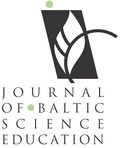CLASSIFICATION OF THE EDUCATIONAL TEXTS STYLES WITH THE METHODS OF ARTIFICIAL INTELLIGENCE
| Title | CLASSIFICATION OF THE EDUCATIONAL TEXTS STYLES WITH THE METHODS OF ARTIFICIAL INTELLIGENCE |
| Publication Type | Journal Article |
| Year of Publication | 2017 |
| Authors | Horáková, T, Houška, M, Dömeová, L |
| Journal | Journal of Baltic Science Education |
| Volume | 16 |
| Issue | 3 |
| Start Page | 324-336 |
| Pagination | Continuous |
| Date Published | June/2017 |
| Type of Article | Original article |
| ISSN | 1648-3898 |
| ISBN Number | E-ISSN 2538-7138 |
| Keywords | Artificial Intelligence, classification and regression trees, educational texts, knowledge representation, knowledge unit, production rules, stylometric analysis |
| Abstract | Modern educational methods emphasize the necessity to transfer knowledge instead of data or information within the educational process. Thus it is important to the educational texts supporting the educational process contain knowledge in a particular textual representation. But it is not trivial to decide whether the particular piece of text contain knowledge or not. The solution is to measure the similarity between the particular text structure and a typical structure of a knowledge-designed text. This research aims at analysing the classification ability of three commonly-used classification techniques: artificial neural networks (ANNs), classification and regression trees (CARTs) and decision trees (bigMLs) to separate texts or text fragments into two groups. The texts in the first group contain mainly data and information (common texts), the texts in the other group contain knowledge in one of the particular knowledge representations (knowledge texts). The sample of 120 text fragments was used for the analysis. The results show that the ANN techniques are significantly more able to make the right classification of the text than the CART or bigML ones, and evidence good classification abilities. Thus the ANN approach could broaden the set of methods used for evaluation of difficulty of educational texts or textbooks. |
| URL | http://oaji.net/articles/2017/987-1497963889.pdf |
| DOI | 10.33225/jbse/17.16.324 |
| Refereed Designation | Refereed |
| Full Text |
